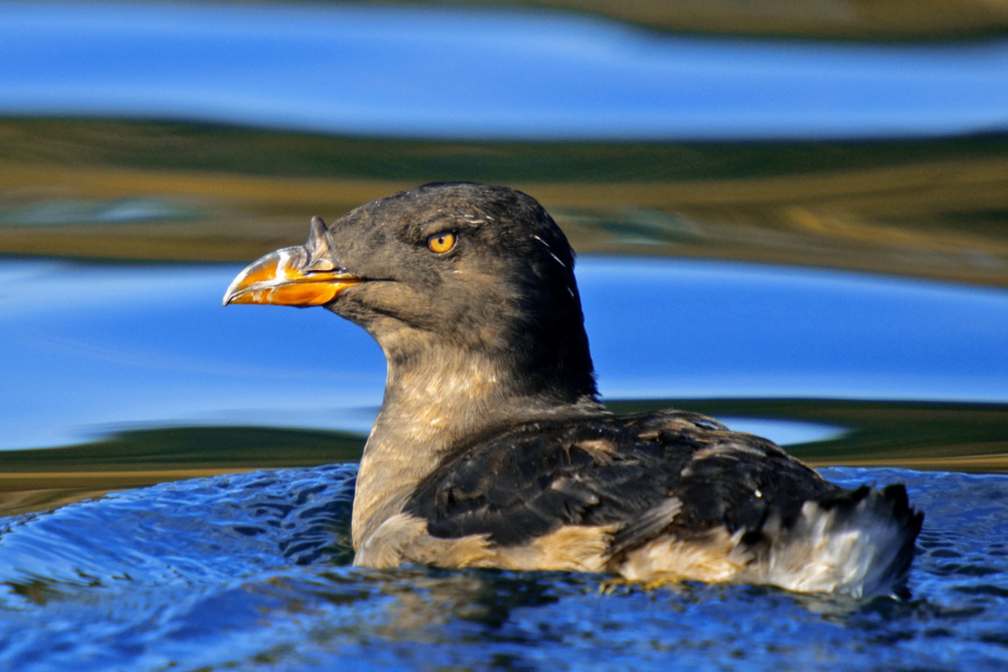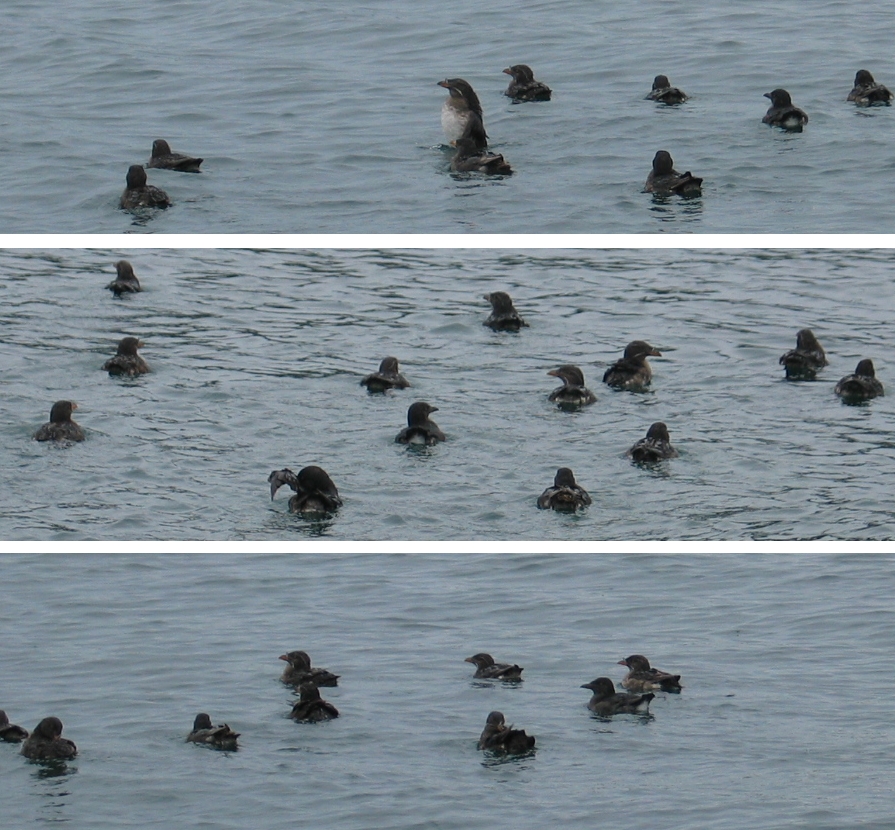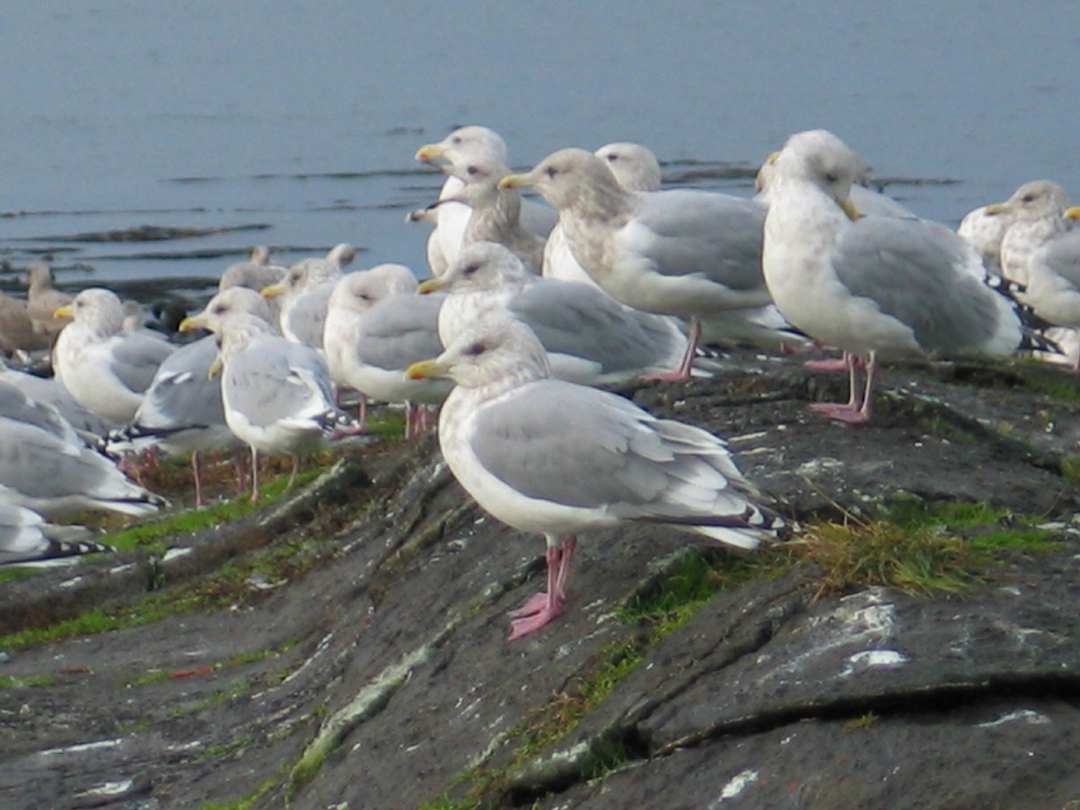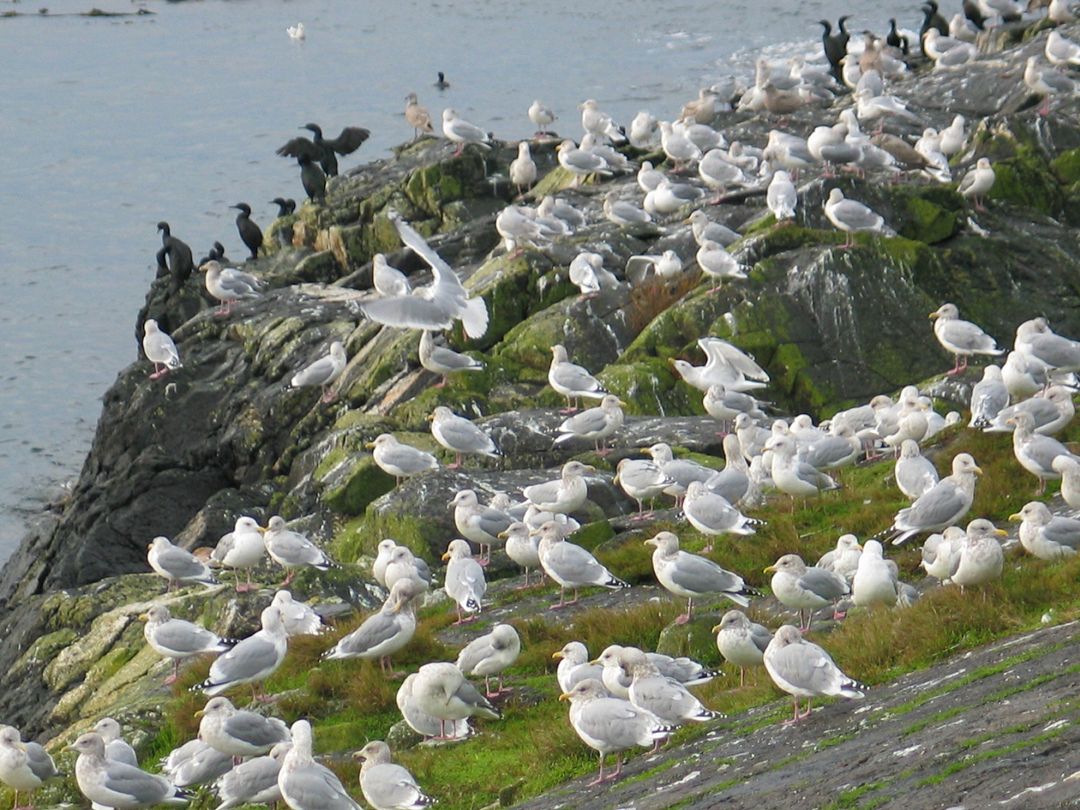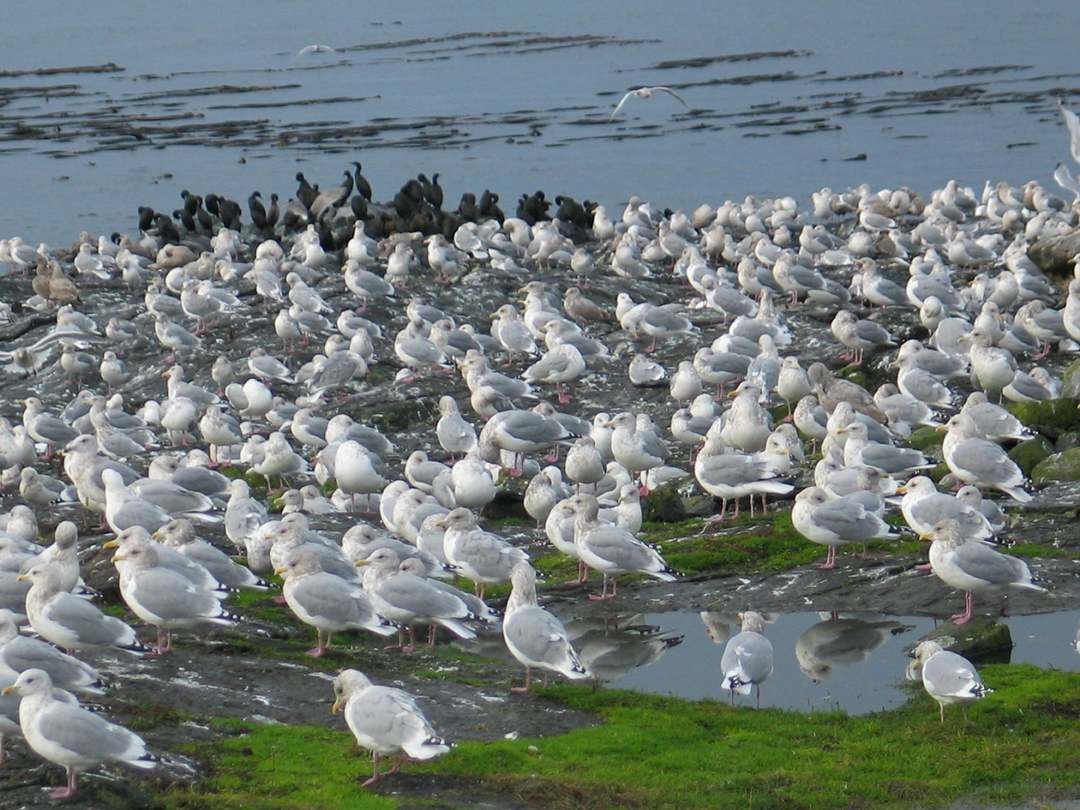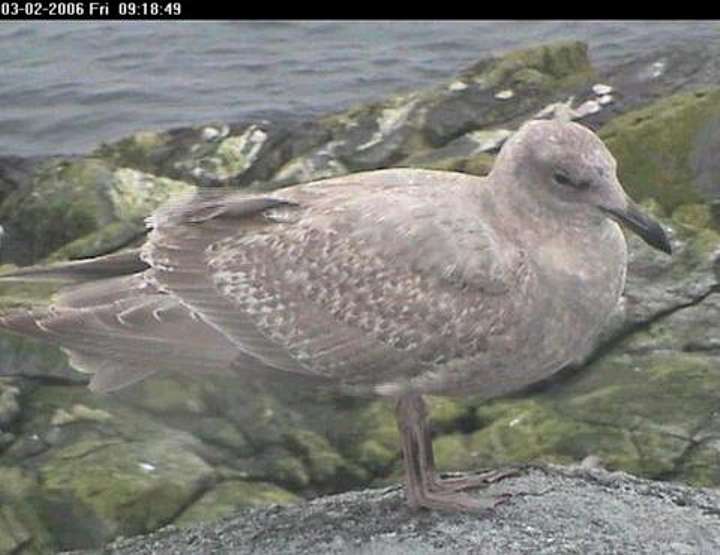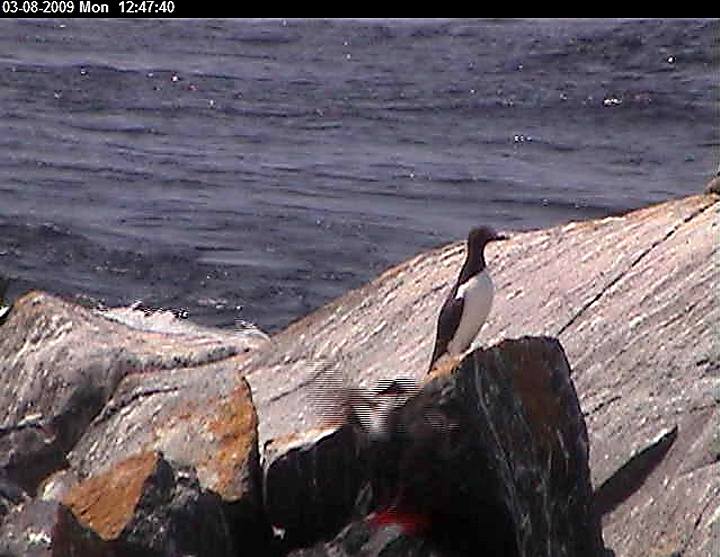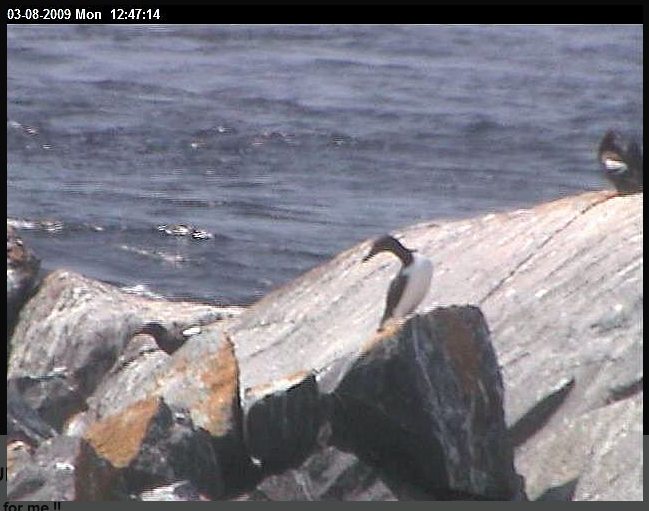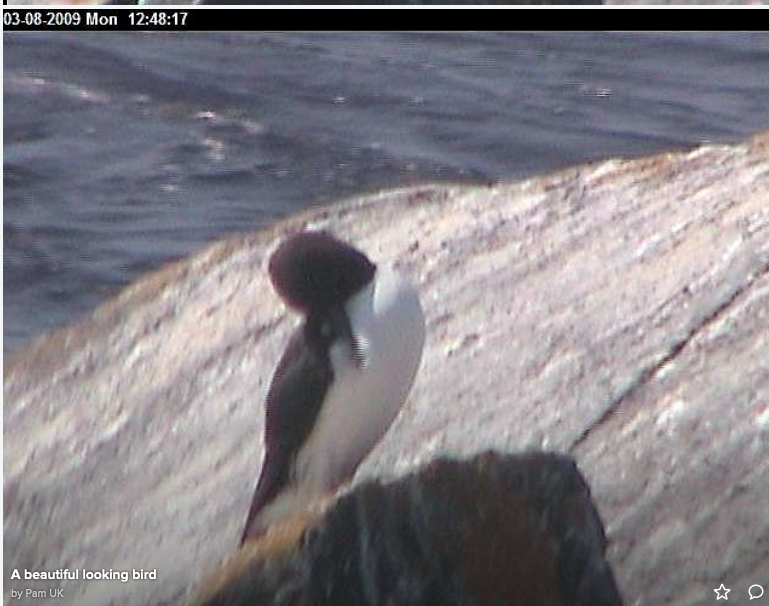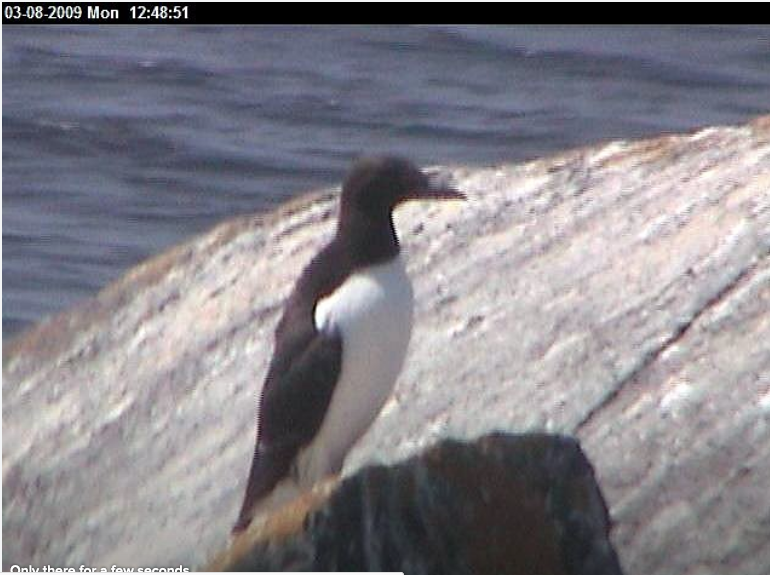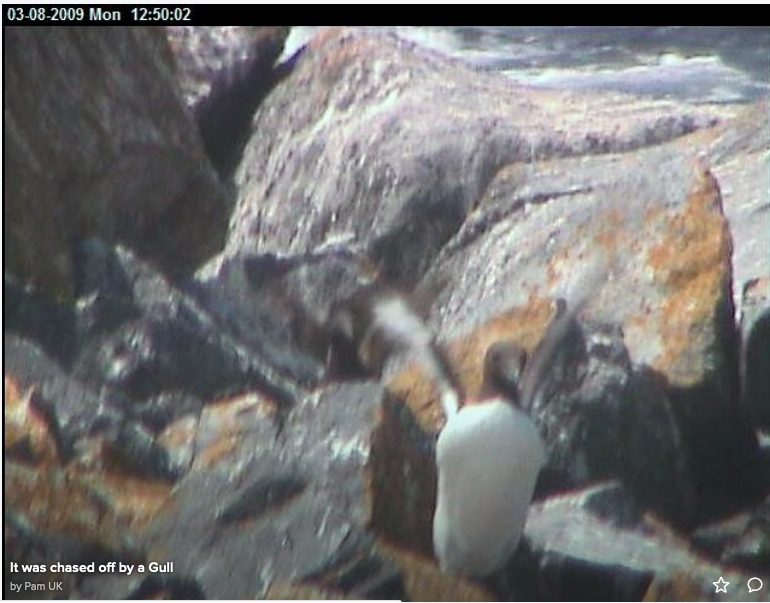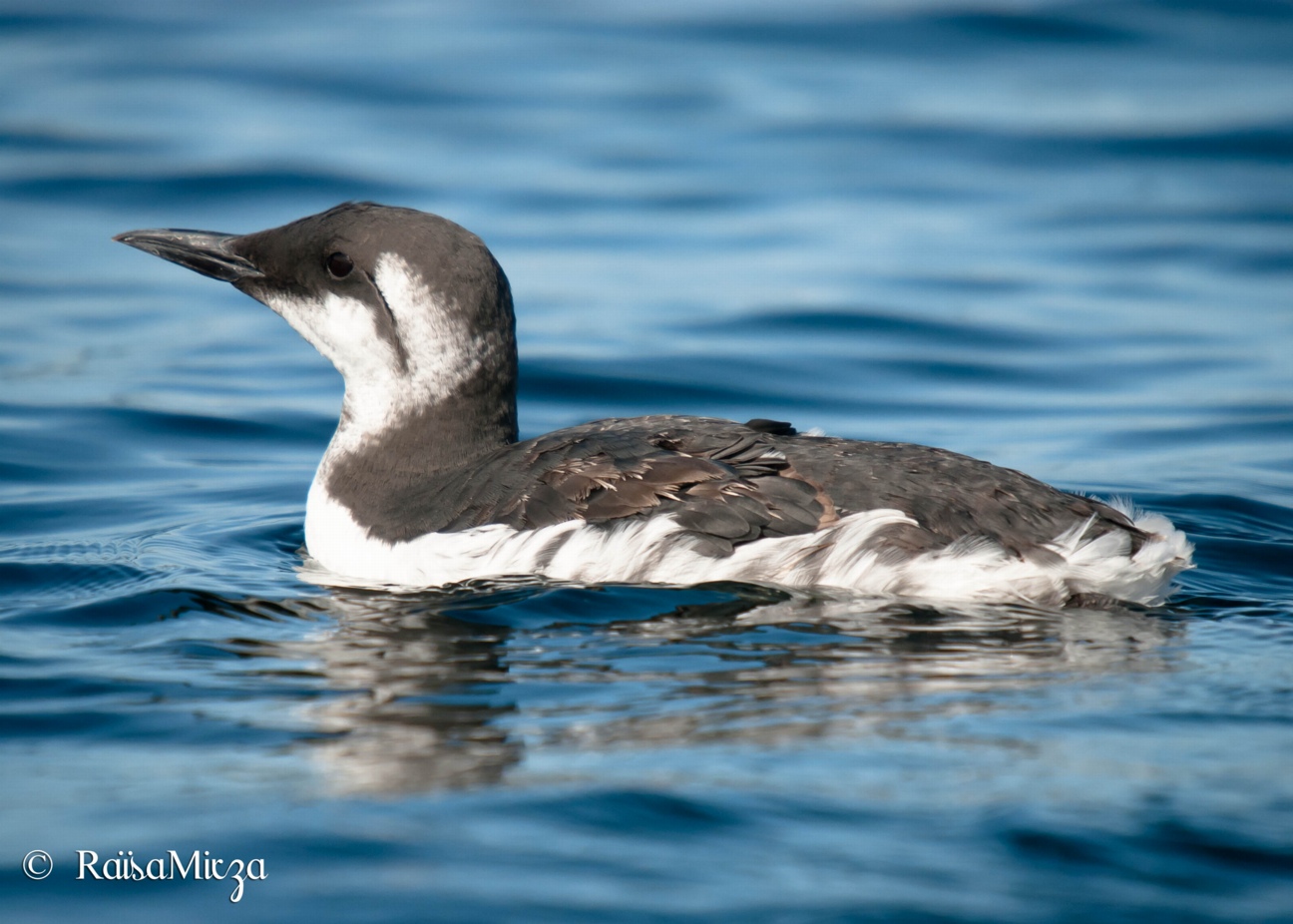
Common Murre – photo by Raisa Mirza
Where at Race Rocks?: Flocks of several hundred common murres will be seen in the waters of Race Passage from August to October, with smaller numbers staying around through the winter. They usually come ashore at Race Rocks only if they have been oiled in an oil spill in the Strait. Occasionally there will be high mortality to large flocks of these birds in the strait of Juan de Fuca when they are caught in fish nets at night.
Domain Eukarya
Kingdom Animalia
Phylum Chordata
Class Aves
Order Charadriiformes
Family Alcidae
Genus Uria
Species aalge
Common Name: Common murre
Interesting local ecology/behavior/adaptation: Common murres are usually a length of 14 inches. They are an immature-like, basic-plumaged adult but often with a thin, pointed bill and small, rounded tail. Blurry streaks make its flank appear dusty, and this thin white trailing edge is visible at rest. Its head, neck, back, wings, and tail are all blackish, and its breast, belly, foreneck, and undertail are white. A dark line extends from its eye across its cheek, and its white breast meets its dark neck as a blunt, rounded intrusion. Both sexes are very similar. Common murres often raft on the surface of the water, fly in lines, and stand erect.
This rare image of a Common murre ashore on the island was photographed by Pam Birley with remote camera 5 on the West side of the island at Race Rocks in August 2009– See Pam’s other images of this murre in her August log .
Distribution elsewhere: All coast of the Northern Hemisphere where cold currents of upwellings nourish a multitude of fish. In the west, they nest in colonies in western Aleutians and from Arctic Alaska to central California. They are found on the ocean or in large bays.
Reproduction and feeding particulars: Eggs of common murres are produced one at a time and are variable in colour, coming in blue, green, or buffy with darker blotches. They are long and pear shaped, and are laid on inaccessible cliff tops on vertical, narrow ledges, especially on rocky islets or head lands. Each nest has enough space for one egg and one incubating parent. Breeding is their main purpose of coming to shore.
Reference: Peterson, Roger Tory, Peterson Field Guide to Western Birds, New York, Houghton Mifflin Company, 1990
Udvardy, Miklos D.F., The Audubon Society Field Guide to North American Birds, New York, Chanticleer Press, 1977
Common murre – http://www.mbr-pwrc.usgs.gov/id/framlst/i0300id.html
n sea clifts. They are accomplished divers that “fly” under water in pursuit of a small fish.
Other Members of the Class Aves at Race Rocks.
